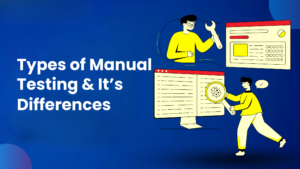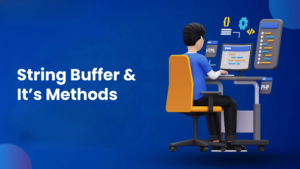

In today’s fast-paced world of software development, it is critical to make sure that all components perform perfectly together. To achieve this balance, integration testing is required since it verifies that different parts interact as intended. This in-depth workshop will look at the various types of integration testing, stressing their importance and practical ways.
Integration testing is an essential stage of the software development life cycle in which many modules or units are combined and tested together. The primary purpose is to identify and resolve issues that arise as a result of the interactions of these interdependent pieces. The goal is to make sure that data and functionality flow freely through the software system.
Big Bang Integration testing is a software testing approach in which separate elements of a system are integrated and assessed simultaneously. This strategy does not integrate parts sequentially; rather, they are joined all at once, frequently at the end of the development cycle. After integration, the system as a whole is tested to detect any flaws or problems.
Top-Down Integration Testing is a software testing approach in which the system’s higher-level modules are tested first, followed by the integration and testing of the lower-level parts. In this technique, testing begins with the top-level modules, which are typically those that interact directly with the user interface or external systems.
Bottom-Up Integration Testing is the reverse of Top-Down Integration Testing. Bottom-Up Integration Testing starts with the lowest-level modules and advances up the system hierarchy. This technique focuses on testing the lowest-level modules, commonly known as “leaf” or “child” modules. Once these modules have been proven to function properly, they are integrated with higher-level modules, which may be made up of many lower-level modules.
Incremental Integration Testing is a software testing approach in which system elements are integrated and tested carefully and gradually. In incremental integration testing, modules are integrated and tested as they are developed rather than waiting until all modules are completed.
Parallel Integration Testing is a software testing method in which different modules of a system are integrated and tested concurrently rather than consecutively. In this technique, integration testing is carried out concurrently, with different teams or testing environments integrating and testing different parts of the system.
Sandwich Integration Testing is a software testing method that incorporates elements of both Top-Down and Bottom-Up Integration Testing. In this method, testing is undertaken from both the top-down and bottom-up viewpoints at the same time, similar to a “sandwich” in which testing happens from both ends and meets in the middle.
- Integration testing reduces the cost and time required to correct errors later in the cycle by assisting in the early detection and resolution of issues during the development phase.
- It verifies that the software’s many modules or sections work together smoothly and that the data and control flow between them is accurate.
- Integration testing improves overall system dependability and reduces the likelihood of errors in the final.
- Integration testing promotes collaboration and a better understanding of the system’s design by encouraging communication across development teams working on different modules.
- Initial identification and resolution of integration issues reduces the amount of effort required for debugging, as smaller sets of integrated parts make it easier to identify the cause of problems.
- Integration testing can be costly and time-consuming since it requires entire testing environments and the collaboration of multiple teams, particularly in large-scale projects.
- It can be challenging to decide when and how to do integration tests, especially when there are dependencies between modules.
- It may be difficult to acquire thorough test coverage, especially when working with many integrated element combinations, which could result in testing gaps.
- The availability and dependability of the test environment are required for integration testing, and any issues may delay or postpone the procedure.
- It can be difficult to identify the true source of integration issues since they frequently originate from the interaction of multiple elements, which increases the time required for isolation and debugging.
Moving testing methods to the left of the development lifecycle becomes more essential. To uncover weaknesses sooner, testing should be implemented early in the software development process. Functional testing is then an important part of the pipeline for continuous integration and delivery, or CI/CD.
Test automation is becoming increasingly important in order to perform faster and more effectively. A growing number of testers use scriptless testing tools, which allow users to create test cases without learning any coding. This trend is likely to continue, making non-developers’ testing easier.
Functional testing is expected to be significantly impacted by AI and machine learning. Test automation technologies may use AI to increase intelligent test case generation, self-healing capabilities, and test script maintenance. Forecasting can help prioritise testing efforts and detect potential problem areas.
With the rise of microservices architecture, API testing has grown in importance. Future functional testing will most likely focus on strong API testing to guarantee that microservices integrate smoothly. To meet the requirements of microservices-based systems, API testing methods and tools will evolve over time.
Functional testing will increasingly incorporate security testing. The primary goal will be to make sure that apps are free of possible dangers and weaknesses while also functioning properly.
Functional testing will continue to be integrated into the whole DevOps workflow. Continuous testing approaches such as continuous integration, continuous delivery, and continuous installation will become more common in order to provide speedy and dependable software releases.
To summarise, understanding the many methods of integration testing in software testing is critical for guaranteeing the proper operation of complex systems. Familiarising yourself with concepts such as top-down testing, bottom-up testing, and hybrid testing will allow you to efficiently identify and address any issues that may come up throughout the integration phase of development. Furthermore, understanding the art of Python automation testing and being familiar with popular Selenium interview questions will help you improve your skills and become a valued asset in the field of software testing. Stay proactive, keep learning, and aim for perfection in your testing efforts.
Consult Us


















